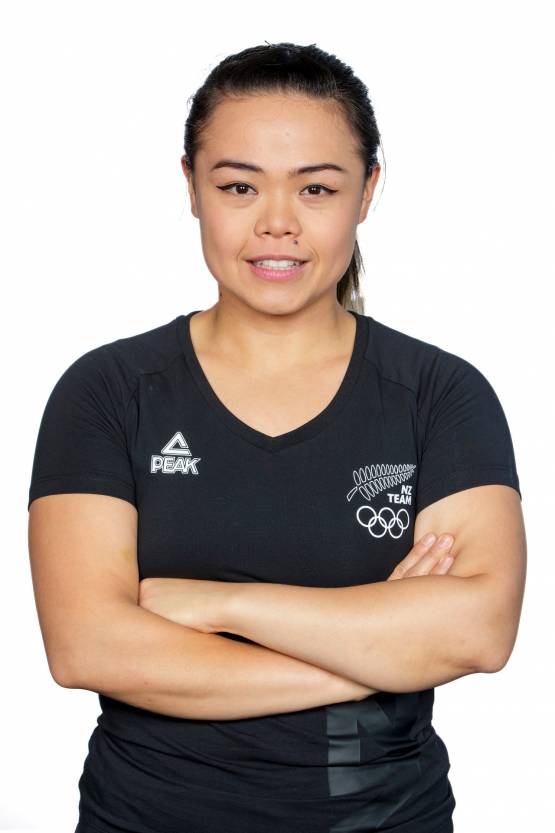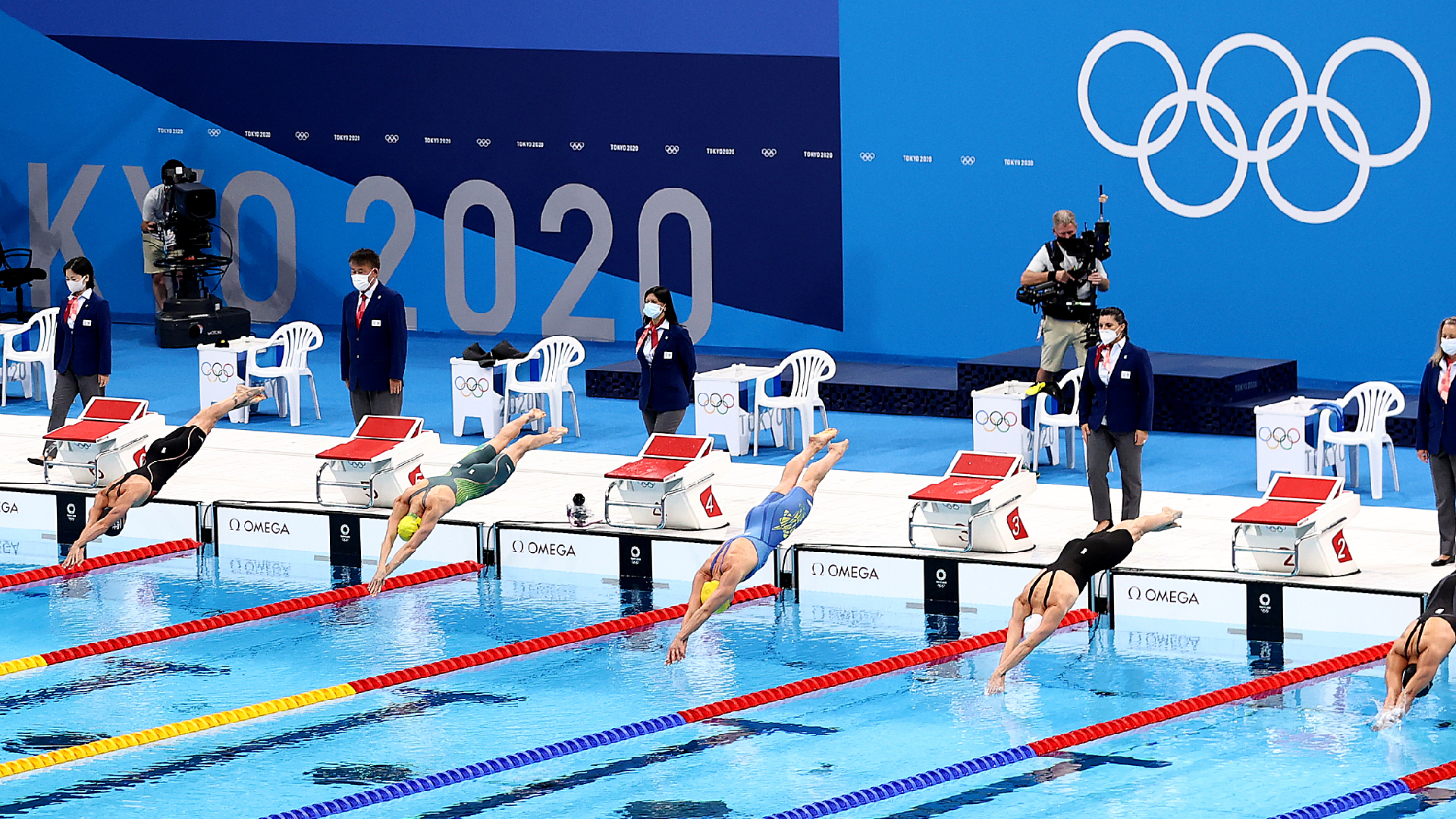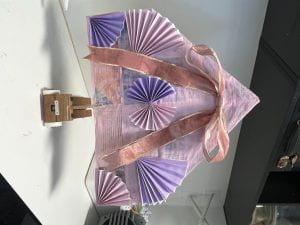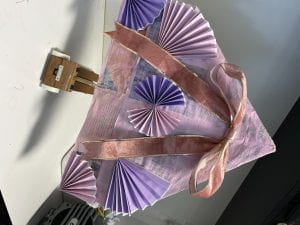Hi Blog! This week we learned so many things in our ESOL class such as practising listening to improve our comprehension on many things and strategies that will sufficiently help us in our studies, apparently that was also the objective learning for our week, to learn and be able to applied it in our studies. We also answered some practice exercises to challenge our brains along with learning how to apply the strategies that our teacher taught us. The most challenging part that I think was listening for details for the reason that sometimes I cannot hear things properly and there are distracting or unfamiliar words in the text. To adhere and resolve this problem I always listen carefully and find some inferring meanings for the words that I am unfamiliar with. Although I know that all of the strategies are easy to detect there are also some things that I need to improve on and I hope to do it this term.
ESOL Reflection Week 8
- What was the activity?
The activity was learning to find a topic’s main idea and supporting details.
- What was the learning objective?
The learning objective was to determine the main idea and be able to apply it in any text.
- What have you learned?
I’ve learned how to find and determine the main idea of a text and apply this to my reading skills.
- Were you able to achieve the learning objective? Why?
I was able to achieve the learning objective because I was able to determine the main idea of a text. However, there’s some difficulties that I encounter in myself from finding the main idea, especially in an implied statement. I think I will do better next time by reading more text and challenging myself in identifying the supporting key details to determine and define the main idea of the text with justification.
- How will you apply your learning?
I will apply my learning in my reading skills, especially on our upcoming L1 Reading Assessment. This will adequately help me to determine the main idea in an easy sight after practising and practising.
The Olympic Games 2024
Section 1: History
Although the ancient Games were staged in Olympia, Greece, from 776 BC through 393 AD, it took 1503 years for the Olympics to return. The first modern Olympics were held in Athens, Greece, in 1896. The man responsible for its rebirth was a Frenchman named Baron Pierre de Coubertin, who presented the idea in 1894. His original thought was to unveil the modern Games in 1900 in his native Paris, but delegates from 34 countries were so enthralled with the concept that they convinced him to move the Games up to 1896 and have Athens serve as the first host.
Section 2: Countries
At the Olympic Summer Games in Paris in 2024, around 10,500 athletes from 206 National Olympic Committees (NOC) will compete. Some of these countries are Albania, Brazil, Canada, The Dominican Republic, Egypt, France, Greece, Hong Kong, Italy and Japan.
Section 3: Events
There are 41st Olympics Sports happening this year. These sports are: Archery, athletics, badminton, basketball , basketball 3×3, boxing, canoe slalom, canoe sprint, road cycling, cycling track, mountain bike, BMX freestyle, BMX racing, equestrian, fencing, football, golf, artistic gymnastics, rhythmic gymnastics, trampoline, handball, hockey, judo, modern pentathlon, rowing, rugby, sailing, shooting, table tennis, taekwondo, tennis, triathlon, volleyball, beach volleyball, diving, marathon swimming, artistic swimming, swimming, water polo, weightlifting and wrestling.
There are also some additional sports that are going to be held in this event. These sports are breaking, sport climbing, skateboarding, surfing. All four are easy to take up and participants form communities that are very active on social media. Over the next five years, the inclusion of these events in the Olympic Games will help inspire millions of children to take up sport.
Sections 4: New Zealand Athlete at the last Olympics (Male)
Kurt Baker
Kurt Baker was a member of the New Zealand men’s rugby sevens team which won silver at the Tokyo 2020 Olympic Games and gold at both the Delhi 2010 and Gold Coast 2018 Commonwealth Games.
Section 5: New Zealand Athlete at the last Olympics (Female)

Andrea Anacan
Andrea Anacan became New Zealand’s first ever Olympic karate athlete when she competed at the Tokyo Olympic Games. Anacan began karate at aged four in the Philippines. She moved to New Zealand aged 12 where she continued to train under sensei Johnny Ling. At age 14 she gave up competing in the contact version of karate, kumate, and chose to focus on the non-contact version of kata instead. Anacan finished seventh at the 2018 karate world championships.
Section 6: Choose three events and research them ( 30 words each)

- Swimming:
At the Olympic Games, swimming events are held in a 50m long pool. The four strokes of Olympic swimming events or both individual and relay races are breaststroke, butterfly, backstroke and freestyle, where crawl is always used. A fifth race, the mixed medley, involves all four strokes, with swimmers switching between them. The distances also vary, with different skills needed for a 50m race to a 1500m. Explosivity, endurance, strength and technique are all essential qualities for the swimmers.
2. Taekwondo 
The aim of taekwondo is for the athlete to kick and punch their opponent, while avoiding being struck themselves. The trademark of this martial art is its combination of kicking and punching movements in quick succession. Matches are fought on an octagonal field of play in three rounds of two minutes each. Points are awarded according to the degree of difficulty of techniques used; for example, a kick to the head scores higher than punches and kicks to the trunk. Spinning kicks are also rewarded with extra points. Penalties may be given to athletes for various faults.
 3. Basketball
3. Basketball
Basketball is a sport played by two opposing teams of five players on a rectangular, indoor court. Players use their hands to control the ball and the aim of the game is to score as many points as possible by throwing the ball through a hoop suspended 3.05 m above the floor and scoring two- and three-pointers, depending on how far away from the hoop the player shoots. Olympic basketball games are divided into four 10-minute quarters. Players switch between offence and defence and must demonstrate endurance, flexibility and, of course, a great deal of skill as they run up and down the court and shoot baskets.
Wind Racer Blog
Aim: To build a wind racer that can be blown as far as possible with a leaf blower, and also to prove and see the relationship between forces, and motion. Through this experiment, we will know how Newton’s law:; forces and motion can be applied to an object.
Equipment:
- Wooden Trolley
- Bamboo sticks *we used at least 2 bamboo sticks for our wind racer
- Skewers
- Newspaper
- Colored paper *optional and based on your design
- Paint
- Elastic Bands
- Tape
- Strings
- Glue gun and glue stick *optional and we provided our own
Method: How did you make it?
- First, we create an outline plan for the structure of our sail and design
- After we’ve done making plans on how to build it, we gather all the equipments we needed
- We fold our newspapers into three to create an triangle shape. The sail will be our main character in this experiment because it will catch the air coming out on the leaf blower and make an direction which way It’ll go.
- We put the bamboo sticks in a cross formation to hold both sides of our newspaper sail
- Due to the fact that the main support of our sail (the triangle part), the bamboo stick is not sticking to the trolley so we have to put rubber band on it and use glue gun on it.
- After doing all of those steps, create the design that you want to do on your wind racer.
Results: Picture and distance and time
The time and distance of our wind racer was 6 meters and 11 seconds


Discussion:
- What was your speed?
- What 4 forces were acting on it
The 4 forces that were acting on the wind racer was the support, weight, push and friction. The main support of our windracer is the wooden trolley and its bamboo stick while the weight depended on it was our designed sail, as we cover the support and weight by using the wooden trolley and sail, we had the leaf blower stand as our push force.
- Were they balanced or unbalanced?
- How to make it go further?
To make it further, I suggest that you hold the leaf blower on the bottom middle of the wooden trolley so it pushes more— place the trolley in the middle part of the starting line. Considering that we didn’t got to do that part because we haven’t had a thought of that while doing it.
Conclusion:
- Did it work?
About our wind racer, yes it worked pretty good not until our classmates windracer beat our record. For the first try of our windracer we got 6m, it was the first one to get that high measurement but obviously it didn’t last long. But about the technique that we came up on late, I’m not quite sure about it because we haven’t tried it yet however for sure it will make a good difference and result if we’ve tried it.
- Would you change anything?
In terms of the design and overall results of our windracer, I wouldn’t try to change anything or something however we will try to make improvements such as brainstorming some techniques that will efficiently help us to win next time.
Investigating Parachute
Aim: To investigate the effect of mass on parachute drop time.
Equipment:
- 1×50 cm square of black rubbish bin liner
- Scissors
- 4 x 40 cm lengths of string
- 4 x large washers or other suitable masses
- 1 x rubber band or twist tie
- stopwatch
Constructing The Parachute:
Step 1: Flatten out your piece of plastic
Step 2: Staple a length of string to each corner of your piece of plastic.
Step 3: Tie the loose ends of the 4 pieces of string together.
Step 4: Attach a single washer to the rubber band
Step 5: Attach the rubber band to the strings
You have now completed your parachute!
Method:
- using your stopwatch , time how long it takes (in seconds) for the parachute to fall to the ground from a suitable safe platform that is atleast 2 m high. Be sure to release the parachute from the same height each time.
- Repeat for 3 trials
- Add another washer to the parachute and repeat steps 1 and 2 until you have used all four washers.
Hypothesis: What do you think is going to happen?
I think it is going to be faster because of the weight and air resistance acting on the parachute.
Results: https://docs.google.com/document/d/1esYmAbZyoA5TbWbS-0VMXRPv6jmo1yeAf_Mr7r2gLjU/edit?usp=sharing
Variables: Describe the variables that could affect your investigation and how you could control them.
- What variables did you control so it was a fair test?
The variables that we control so it will remain a fair test was the measurements of how high do we drop it and the same person who was dropping it.
- How did adding more mass affect the speed? Why? Link to class learning.
The more mass that we add the more higher speed it becomes. It is because of the air resistance and weight acting on the object. It affects the mass because as it says on the discussion “The more matter an object contains, the greater its mass” that also affects the weight by the force of gravity that causes an object to accelerate downwards at a rate of 10ms-2.
Definition of Mass, Weight and Gravity:
- Mass is the amount of matter we are made of
- Weight is the gravity measured/calculated by 10ms-1
- Gravity is the downwards force acting on an object or a living thing.
Conclusion:
- Did it work?
It worked pretty well as we observe the differences of each speeds by their fall on the ground. We also proved our hypothesis by the success of our experiment investigation.
Would you do anything different?
If I am going to be honest , No. I wouldn’t do anything different in terms of the structure of pur parachute and our overall investigation, this is because the structure of our parachute gave us an accurate evidence to prove our hypothesis.
An Unexpected Expected Moment- Athletics Day
An Unexpected Expected Moment- Athletics Day
Yesterday. March 11th, 2024, was our Athletics Day. The weather was not good because it was raining first thing in the morning, and this weather became a hurdle for us, students. After being all disappointed about the weather, I felt good when I did my first athletic event of the day which was ‘Discuss’. Something that surprised me was when it started raining heavily after it stopped, it started raining when I was about to start doing the long jump. My friend, Shanaya did well in our first athletic event of the day; Discuss, it was kind of surprising but not really surprising because knowing Shanaya, she’s really sporty and good at anything that she does if she just puts her heart into it, she even got further results than me. One thing I would have done is to throw my discus properly and practice more before the Athletics event. The highlight of my day was when I got soaked in the rain and played fun games in our PE class after. My goal for Athletics is to do well in my chosen athletics event and do it properly with some amazing techniques. Next year I hope to come 1st or 3rd in my chosen Athletics event and I hope that it’ll not rain anymore by that time.
Improving is Better than Not Even Trying- ESOL Reflection
Week 4:
Feb 19, 2024
Today in our ESOL class, we did some interesting tasks even though we only did catch-up work, it’s still interesting because we wrote our learning goals this year. I learned that there are many things that I need to improve on such as improving my listening, reading, and especially my writing and spoken interaction skills. By improving these things I can excel well in my studies and deepen my understanding of these main skills that I need to use in life, especially when I take my NCEA test soon.
Week 7:
March 15, 2024
Yesterday, we read the book given by our teacher, Mrs. Delia Talili. The title of the book that we’ve read is “The Football Shirt” It was pretty creepy starting from its book cover, but upon reading it with my partner I confirmed that it really is. I’ve learned many things about the book such as; learning new unfamiliar words, and learning to focus more especially when reading because we’re reading orally with our partners.
Week 10:
April 4, 2024
For the past few week in our ESOL class, we’ve been working on the book “The Football Shirt” and the activities prepared by our teacher, Ms. Delia Talili. Upon doing these activities, I learned many things about it starting from the moral lessons every chapter. We also practiced reading with expressions and other practices that may potentially help us to improve our reading skills.
HEC L1 HEALTH AND SAFETY
Health & Safety
You are heading to a desert island and you can take no more than 5 items. What are you taking with you? and why?
- Water- Humans can survive without much food in their body, but cannot survive any longer day without water.
- Medical Kit- To treat any injuries or harms that we are prone to.
- Firestarter- Bringing a firestarter has a lot of things that will help us such as reheating our foods, preventing hyperthermia/hypothermia, and emergency signaling.
- Emergency Cards- Being in a desert means we are much more likely to be prone to any dangers that surround the place. Carrying an emergency card can be a potentially life-saving precaution.
- Knife-Knife is one of the things that will surely be helpful for us. A knife can be flexible in many ways as it can be our firestarter, cutting equipment, self-defense, medical and self-defense uses, and for signalization just in case.
Explain in your own words what Health and Safety looks like in our food room.
There were heaps of health and safety protocols in our food room that helps us prevent, and assess hazards. The first thing that we do before entering the kitchen is, we tie our hair neatly and remove our pieces of jewelry and our school jackets. This is to prevent the spread of bacteria to our food, especially if it is unwrapped or we’re still cooking it. After doing this thing, our teachers/instructors will discuss or assess the protocols about hazards that we are prone to and how do we prevent such things as washing and drying hands thoroughly, handling a knife and hot dishes in a proper way, wiping and cleaning the table that we are going to occupy, using the right colour of cutting boards to avoid cross contamination, and many more.
Why is it important, How can this impact us from a personal level/ community level?
Health and Safety is important to ensure the safety and promotion of wellbeing not only for our self but also for our community. As it mount its impact, this will hugely benefit our physical and mental well-being, environment protection and for our economic stability.
Name for me 3 high-risk foods we have
- Eggs or any dairy products
- Meats
- Cooked Rice
In the last 2 practicals, How do we store them to ensure they are safe to eat.
- Egg or any dairy products- we store the eggs or any dairy products in their original carton in the refrigerator, and we avoid leaving it in a very low temperature places.
- Meats- We store the meats in a very cold place or in the freezer of the refrigerator to avoid cross contamination with the other foods. We thaw frozen meats in the refrigerator, microwave, or cold water, never at room temperature as it can risk bacterial growth.
- Cooked Rice- We put the cooked rice in an very shallow containers and then refrigerate it after.
Palm Oil
Palm Oil
Social Studies- Get Rich or Die Trying- Slide 49-54
- What is palm oil?
Palm oil is an edible vegetable oil derived from the mesocarp of the fruit of the oil palms. The oil is used in food manufacturing, in beauty products, and as biofuel.
- Why do we use it?
The highly saturated nature of palm oil renders it solid at room temperature in temperate regions, making it a cheap substitute for butter or hydrogenated vegetable oils in uses where solid fat is desirable, such as the making of pastry dough and baked goods.
- Where does it come from?
Palm oil is derived from the fruit of oil palm trees, primarily grown in tropical regions like Indonesia and Malaysia.
- Who grows it and what effect does growing it have on the world?
Indonesia and Malaysia are big palm oil producers. Making palm oil harms the environment and can cause problems like cutting down forests, harming wildlife, and causing social issues. Some places are working on sustainable practices to lessen these problems.
- Who is making the money?
Companies that make and sell palm oil get the most money. This includes those who grow, process, and sell it for food or cosmetics. Sometimes, local communities benefit too, but how much varies. There are concerns about whether people in these areas get fair pay and if the social impacts are fair to them.
- Who is losing out?
Nature and local people often suffer or lose out because of palm oil. Cutting down trees for palm oil harms animals and plants. Indigenous groups may lose their homes, and workers might have problems with their rights. This hurts the environment and communities, and it’s a global issue that adds to climate change. People are trying to use more sustainable ways to lessen these problems.
- Why are we concerned with Palm Oil?
Ad created to discourage people buying Nestle
https://media.greenpeace.org/Detail/27MZIF20N4P6
- What message is the ad trying to get across to the audience?
To advocate the audience about the unethical use of Palm oils of the Nestle KitKat Company. Nestle KitKat company uses Palm oil from Indonesian rainforests and peatlands,that causes the rainforest to be destroyed and endanger orangutans to the brink of extinction and accelerating climate change.
- Was it effective?
Yes, because the time that people knew about it the Nestle company decided to take actions and change the use of their palm oil.
- Did this ad change Nestle’s use of Palm oil.
Yes, Nestlé changes how they use palm oil to be more environmentally friendly and socially responsible. This is happening because people want businesses to be sustainable, and using palm oil in a responsible way meets those goals. Companies, especially in the food industry, are working to get palm oil that is certified as sustainable or finding other ingredients to use instead.
Skin
- How much does Skin cover in square metres?
1.7m
- What body system is skin part of?
Integumentary System
- What are the names of the skin Layers?
epidermis, Keratin, collagen
- Where is skin the thickest?
bottom of feet
- Where is Skin the thinnest?
eyelids
- What are the 3 functions of Skin?
protecting, regulating, Sensing
- How often are skin cells replaced?
every 4 weeks/ 28 days
